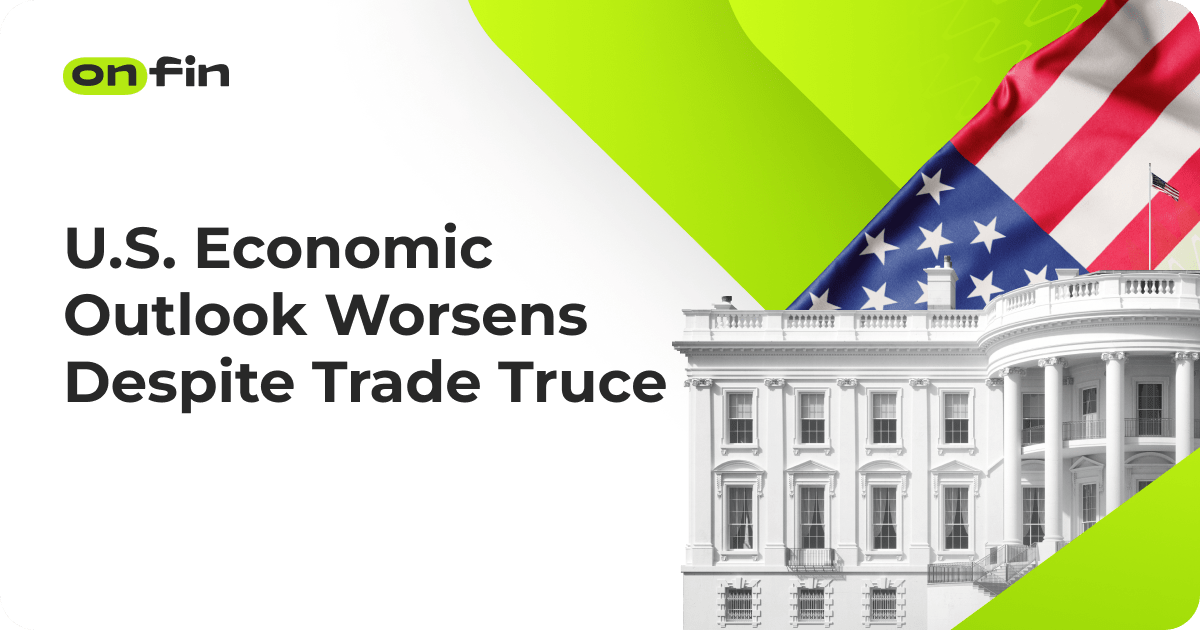Despite a recent softening in the U.S.-China trade conflict, many economists remain concerned about the medium- and long-term outlook for the American economy. A new Reuters poll conducted among leading economists indicates that fundamental economic challenges in the United States persist, even as temporary relief from trade tensions has slightly improved market sentiment.
Earlier this month, the U.S. and China agreed to a 90-day pause in their mutual tariff increases. The agreement includes a temporary reduction of existing import duties and a commitment to resume high-level trade talks. While this truce has helped to ease fears of an imminent escalation in the trade war, economists caution that the measure is unlikely to deliver lasting economic relief without broader structural changes.
According to the Reuters survey, most experts believe that the short-term benefits of the deal are modest. The probability of a recession in the United States has decreased only slightly, with many respondents emphasizing the ongoing risks posed by policy uncertainty, fiscal imbalances, and external economic pressures.
Adding to these concerns, rating agency Moody’s downgraded the sovereign credit rating of the United States last Friday, citing rising fiscal risks. The downgrade followed the announcement of a proposal by President Donald Trump to implement tax reductions in several U.S. states — a move that critics warn could significantly widen the federal budget deficit. “Moody’s is likely sending a message that the proposed tax reform plan is fiscally irresponsible,” said Aditya Bhave, senior economist at Bank of America. He added that the timing of the tax changes, in the face of rising public debt and uncertain revenue projections, is especially troubling.
The debate over future interest rate policy also reflects the prevailing uncertainty. Projections for the Federal Reserve’s benchmark interest rate by the end of 2025 vary widely among analysts. Around 75% of those surveyed expect the key rate to end the year in the range of 3.75% to 4.00% or higher. This marks a noticeable increase from April, when only 66% held such expectations. Some economists now believe the Federal Reserve may delay any potential rate cuts, citing persistent inflationary pressures and concerns about the effectiveness of fiscal policy measures.
Additionally, other recent data have added to the mixed outlook. Consumer spending remains uneven across income groups, and housing affordability continues to deteriorate in major metropolitan areas. Meanwhile, U.S. manufacturing output showed slight growth in April, but order backlogs and supply chain challenges continue to weigh on the sector.
Markets responded cautiously to the news. On Tuesday, major U.S. stock indices were mixed, with the S&P 500 posting a modest gain of 0.3%, while the Nasdaq Composite fell by 0.2%. Bond yields ticked higher, with the 10-year Treasury yield rising to 4.18% — reflecting expectations of prolonged higher rates. The U.S. dollar strengthened slightly against a basket of global currencies.
Looking ahead, investors and analysts will closely monitor the next round of economic data releases, including GDP revisions, consumer confidence surveys, and corporate earnings reports. The Federal Reserve’s upcoming policy meeting in June is also expected to provide further clarity on the direction of monetary policy in light of these developments.
Overall, the temporary improvement in U.S.-China relations has not been enough to dispel concerns about the sustainability of economic growth in the United States. Economists warn that without a comprehensive fiscal strategy and structural reforms, the country may face mounting financial pressure in the months ahead.







